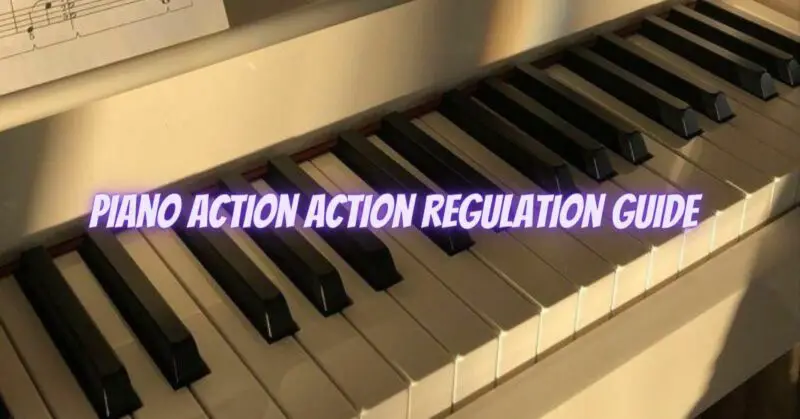The piano action is a complex mechanism responsible for translating the pressing of piano keys into the production of sound. Over time, the action may become misaligned or worn, affecting the piano’s responsiveness and playability. Proper regulation is essential to maintain the piano’s optimal performance and ensure a satisfying playing experience. In this guide, we’ll explore the steps involved in regulating a piano action.
1. Gather Necessary Tools: Before you begin, gather the required tools, which may include key leveling tools, key leveling gauge, hammer voicing needles, action lubricant, screwdrivers, and other specialized piano tools.
2. Cleaning and Inspection: Start by cleaning the action thoroughly to remove dust and debris. Inspect each component, including the keys, hammers, springs, flanges, and bridle straps, for any signs of wear or damage.
3. Adjust Key Dip and Let-Off: Key dip refers to the distance a key travels when pressed, while let-off is the point where the hammer disengages from the jack. Use key leveling tools and gauges to ensure consistent key dip and regulate the let-off for each key.
4. Align Hammer Alignment: Check the alignment of the hammers to ensure they strike the strings squarely and evenly. Adjust the hammer alignment using hammer flanges to achieve a balanced tone across the keyboard.
5. Hammer Voicing: Voicing involves shaping the hammers to produce a consistent and pleasing tone. Use voicing needles to soften or harden the hammers as needed, creating an even sound from low to high notes.
6. Check Damper System: Inspect the damper system to ensure proper functioning. Adjust the damper lift and drop to prevent any lingering or muting of notes.
7. Regulate Repetition Lever: The repetition lever is responsible for the rapid repetition of notes. Make sure it is correctly aligned to allow for fast key repetitions.
8. Level and Align Keys: Ensure that all keys are level and aligned with each other. Adjust the balance rail pins and punchings to achieve proper key leveling.
9. Check Bridle Straps and Bracing: Inspect the bridle straps and bracing to ensure they are properly aligned and functioning to maintain the stability of the action.
10. Lubrication: Proper lubrication is essential for smooth action movement. Apply action lubricant to friction points and pivot points for improved responsiveness.
11. Reassembly and Testing: After making adjustments and completing the regulation process, reassemble the action and test the piano thoroughly. Play through various musical passages to ensure that all keys respond uniformly and produce a balanced and pleasing sound.
12. Professional Assistance: While some basic regulation can be performed by experienced pianists, complex or significant issues should be addressed by a qualified piano technician. Regular maintenance and professional regulation will keep your piano performing at its best and extend its lifespan.
Conclusion: Regulating a piano action is a detailed process that requires attention to each component’s fine-tuning. With proper care and maintenance, your piano will maintain its responsiveness, tonal quality, and playability. Whether you are a pianist or a piano owner, investing in proper action regulation ensures that your instrument delivers the joy of music for generations to come. For more complex regulation and repair needs, don’t hesitate to seek the expertise of a professional piano technician for the best results.

